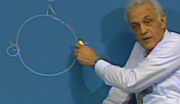Bose Model 901 Active Equalizer ('68 Edition) Measurements

I was able to source an original Bose Model 901 Active Equalizer (Series One). While there is no serial number on the equalizer, it was part of a set that had one Bose Model 901 speaker with a serial number BELOW #800. The matching speaker has a serial # over 1100 which had the more traditionally seen Bose label.


This unit has not been restored. No electrical performance specifications were provided at the time by Bose.

2.118V input
-51.3 dB
SINAD

1.0608V input
-55.1 dB
SINAD

We can keep driving the input signal down, but it doesn't get much better than ~58 dB SINAD.


Here is the 1968 equalizer in "flat" mode (blue) versus the modern Series VI model:

REW sweep showing distortion of the 1968 edition

vs the Series VI model under the same input voltage

Subjective Impressions? Not yet.
The original Model 901 speakers are a sealed design. The drivers are also different with cloth surrounds instead of foam surrounds of the Series III and newer.
It's interesting to see how the equalization differs but it’s unclear if the originals need less equalization because of the transducers and enclosure, or if the originals would have benefitted from the more complex equalization but the research or technology didn’t exist yet. Given the distortion performance of my vintage equalizer though, I probably do need to use a MiniDSP device to give the speakers a fair listen or consider recapping the original equalizer.
The speakers are actually still in transit, but given that I seem to fortuitously have a room where the 901 works really well, what I really intend to test is:


I was able to source an original Bose Model 901 Active Equalizer (Series One). While there is no serial number on the equalizer, it was part of a set that had one Bose Model 901 speaker with a serial number BELOW #800. The matching speaker has a serial # over 1100 which had the more traditionally seen Bose label.
This unit has not been restored. No electrical performance specifications were provided at the time by Bose.
2.118V input
-51.3 dB
SINAD
1.0608V input
-55.1 dB
SINAD
We can keep driving the input signal down, but it doesn't get much better than ~58 dB SINAD.
Here is the 1968 equalizer in "flat" mode (blue) versus the modern Series VI model:
REW sweep showing distortion of the 1968 edition
vs the Series VI model under the same input voltage
Subjective Impressions? Not yet.
The original Model 901 speakers are a sealed design. The drivers are also different with cloth surrounds instead of foam surrounds of the Series III and newer.
It's interesting to see how the equalization differs but it’s unclear if the originals need less equalization because of the transducers and enclosure, or if the originals would have benefitted from the more complex equalization but the research or technology didn’t exist yet. Given the distortion performance of my vintage equalizer though, I probably do need to use a MiniDSP device to give the speakers a fair listen or consider recapping the original equalizer.
The speakers are actually still in transit, but given that I seem to fortuitously have a room where the 901 works really well, what I really intend to test is:
